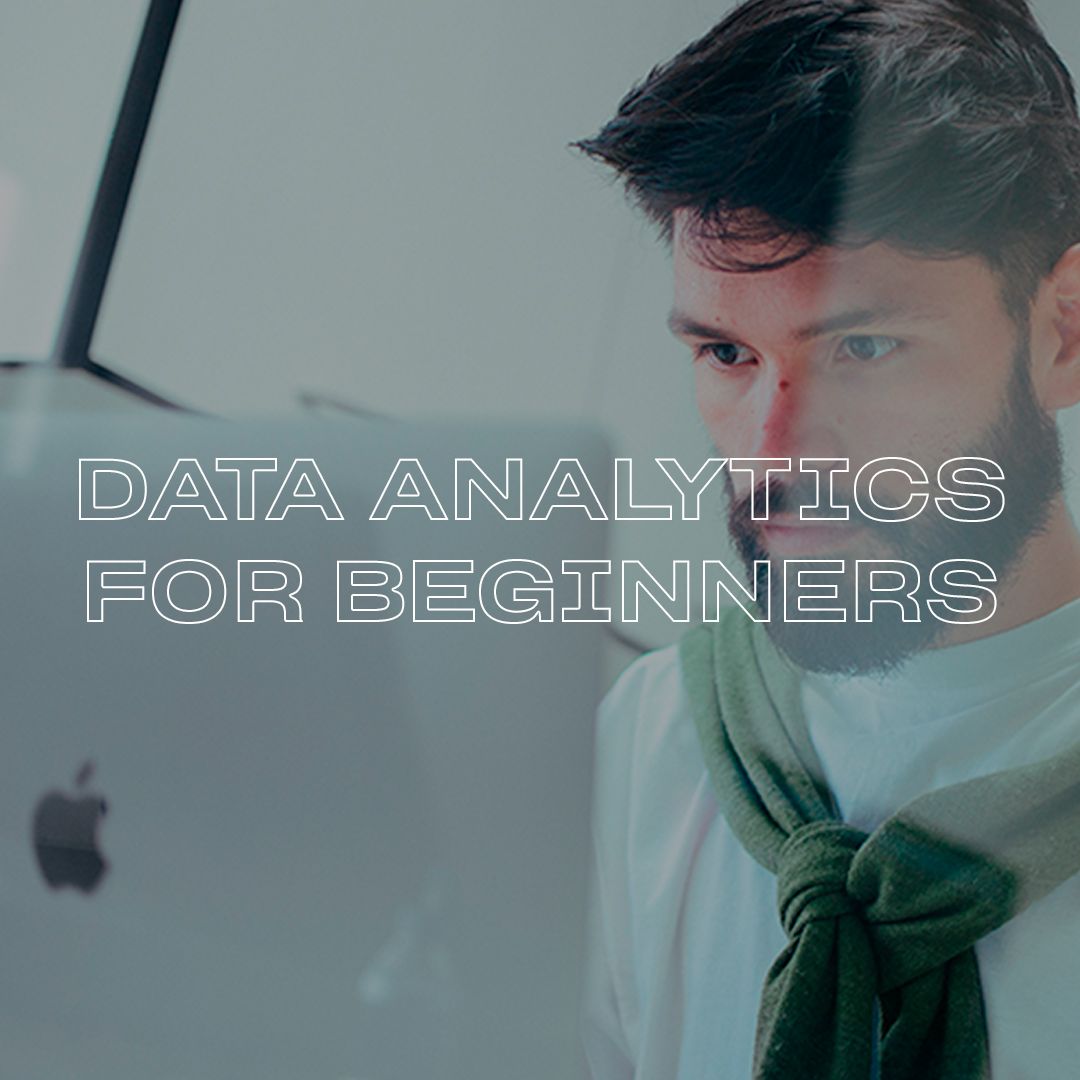Business Analytics Beginners – Figure 1.1: In this book, you become a business analyst who moves easily between the real world of business and the theoretical world of mathematics. You translate real-world scenarios into both mathematical and computational representations that provide actionable insights. You then bring this insight back into the real world to convince stakeholders to change and improve your real-world solutions.
This textbook goes beyond teaching computational models using software or mathematical models using statistics. It teaches you how to match computational and mathematical models to real-world scenarios; enables you to collaborate using insights from business stakeholders while leveraging modern software stacks and statistical workflows. In this book, you will not learn business analysis to build models; you will learn business analytics to add tangible value in the real world.
Business Analytics Beginners

Figure 1.2: Buy the beautiful printed color version of the Business Analyst Handbook from Amazon: http://www.amazon.com/dp/B08DBYPRD2.
Gedy 129 Business Analytics Syllabus
Written by me, Dr. Adam Fleischhacker, an award-winning professor, software designer, researcher, and active industry analytics consultant. I wrote this guide to speed up your mastery of data-driven business analyst workflows. On your journey to becoming a world-class analyst, here are some important points to use in this textbook.
Videos that help bring the material to life are available on my YouTube channel. Each chapter video should be watched after reading and coding along with the textbook. Search for Adam Fleischhacker on YouTube or follow this link directly: https://www.youtube.com/playlist?list=PLassxuIVwGLPy-mtohX-NXrjD8fc9FBOc. You can copy and paste the code from the online version of the textbook (https:///).
** In particular, the use of better sampling techniques using adaptive Hamiltonian Markov Chain Monte Carlo (HMCMC). Using Bayesian inference is probably the best method of combining data with domain knowledge to produce interpretable and meaningful results that lead us to better results. In my opinion, this is something that students should learn to be a business analyst and be able to think clearly.
To use some of the data sets and features included in this book, readers must eventually install
Data Analytics Books You Should Read In 2023
The R package and its dependencies (this installation process is covered in Chapter 15). Data sets and graph visualizations don’t need dependencies, just run this line:
A Business Analyst’s Introduction to Business Analytics by Adam Fleischhacker is licensed under a Creative Commons Attribution-NonCommercial-NoDerivatives 4.0 License. A business analysis process is a step-by-step approach that an organization uses to perform analysis throughout its business analysis life cycle. Depending on the organization, there may be specific steps to the approach, but the big picture is the same for everyone.
Business analysis is a very popular term in various sectors of the 21st century. It corresponds to a set of methodologies and tools that change the decision-making process of organizations. Because the impact of business analytics is so great, organizations have defined the life cycle of business analytics so that you don’t make mistakes and miss important information. This process is called the business analysis process. The process steps may vary from organization to organization depending on many factors, e.g. The industry, type of product, size of the enterprise, etc. play a big role in their determination. But broadly, the entire process of business analysis can be divided into six stages.

In this blog, we discuss the business analysis process and its six steps in the following sections:
Why Should You Learn Business Analytics?
Business analytics is a term that has taken industries by storm in the 21st century. All companies around the world wanted to make more profit and the only way to do that was to identify gaps and fill them. The business intelligence process was originally a problem-solving approach for many organizations where data was collected and accessed. This information was then used for a variety of purposes, from improving customer service to predicting fraud. Due to its massive success, people quickly realized that business analytics can not only solve visible problems that already exist, but also alert them to illusive problems that don’t seem to exist.
As the world began to notice the impact of business intelligence, organizations quickly realized that its potential is not only related to solving problems, but they can also use it to predict, plan, improvise and overcome various obstacles.
Business analytics is a discipline where you use existing data to uncover key insights that help you solve business problems. To find these insights, you need to use many statistical models and process the data to fit those models.
In today’s world, business analysis is so important that almost every organization has a business analysis team and clear steps in the business analysis process. Since all forms of business have problems and drawbacks, business intelligence is a viable approach in any industry. From the food industry to the IT sector, everyone uses business intelligence to find optimal ways to do business.
Ibm Launches New Software To Break Down Data Silos And Streamline Planning And Analytics
In addition, almost every organization follows well-defined steps in the business analysis process. These process steps vary from organization to organization. However, some basic steps remain the same for almost everyone. We will discuss them in this blog.
The process of business analysis involves asking questions, looking at data, and processing it to find the answers you need. Now, every organization has different ways of doing this process because each of these organizations work in different sectors and value different metrics more than others based on their specific business model.
Because different organizations have different approaches to business, their solutions and the ways to reach them are also different. However, all their activities can be classified and generalized to understand their approach. The figure below shows the stages of a company’s business analysis process.

The image above only covers the overview of the business analysis process. Now let’s translate this into the actual steps involved in solving the problem.
Business Analysis Tutorial
The first step in this process is to identify the business problem. A problem can be a real crisis; it can be related to recognizing business needs or optimizing current processes. This is an important stage of business analysis, because it is important to clearly understand what the expected result will be. Once the desired outcome is determined, it is broken down into even smaller goals. The company’s stakeholders then decide what information is needed to solve the problem. At this stage, some important questions need to be answered, such as: What information is available? Is there enough information? And so on.
After identifying the problem statement, the next step is data collection (if needed) and, most importantly, data cleansing – most organizations have a wealth of data, but not all data points will be accurate or useful. Organizations collect large amounts of data using a variety of methods, but sometimes the data set may contain irrelevant information or blank spots. This incorrect information can interfere with the analysis. Therefore, it is very important to clean the analyzed data.
To do this, you need to perform missing data calculations, remove outliers, and find new variables as a set of other variables. You also need to make time series graphs because they usually show patterns and indicators. It is very important to eliminate outliers because they can affect the accuracy of the model being built. In addition, data cleaning helps you better understand the data set.
Once the data is ready, the next step is to analyze it. Now various statistical methods (such as hypothesis testing, correlation, etc.) are used to do this so that you know what kind of knowledge you are looking for. You can use any method for which you have the information.
What Is The Typical Data Analyst Career Path? [2023 Guide]
The main way to analyze is to revolve around the target variable, so you need to consider all the factors that affect the target variable. In addition, many assumptions are also considered in order to know what the results might be. In general, at this stage, data is shared and comparisons are made. With these methods you want to gain practical knowledge.
Gone are the days of using analytics to provide answers. In today’s time, business intelligence is all about being proactive. In this step, you use predictive techniques such as neural networks or decision trees to model the data. These predictive techniques help you uncover hidden insights and relationships between variables, which further help you uncover patterns in your most important metrics. Basically, many models are used simultaneously and the most accurate models are selected. At this stage, many conditions are also checked as parameters, and many “what if …?” are answered.
Based on the insights gained from the target variables model, this step creates an actionable action plan that aligns with the organization’s goals and expectations. The plan of the mentioned activities is included

